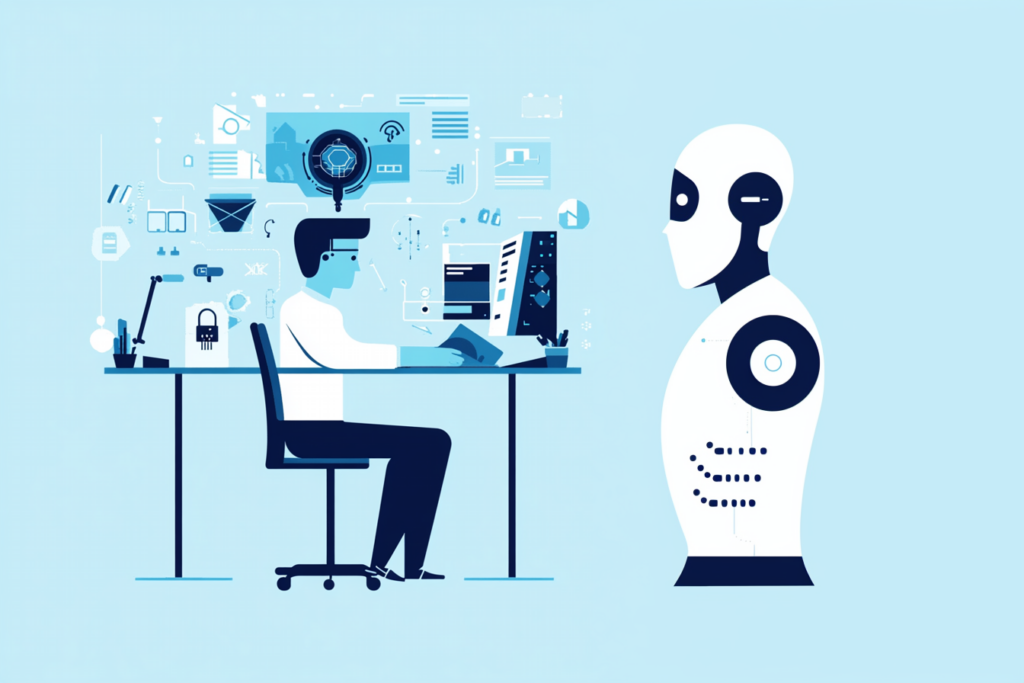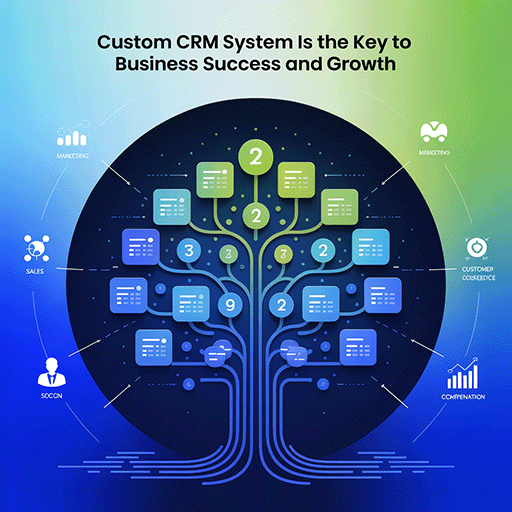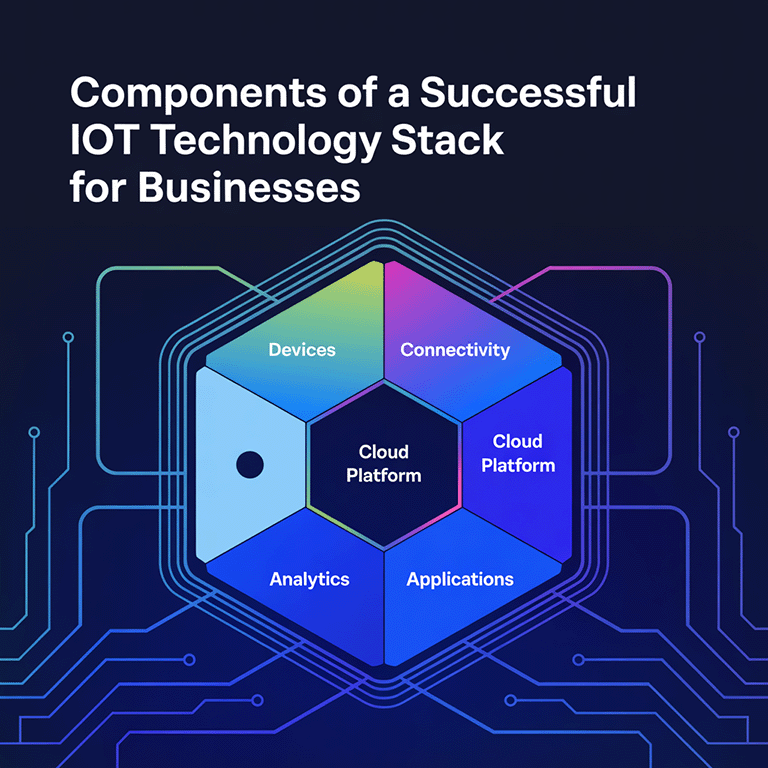Bogged down by repetitive tasks or losing ground to competitors? Building an AI agent can cut costs, boost efficiency, and put you back in the lead—fast. Picture this: businesses using AI agents can slash operational costs by up to 30%, according to IBM, proving these smart tools aren’t just a trend—they’re a game-changer.
Whether you’re a startup founder itching to automate customer support or a developer eager to harness AI’s power, this step-by-step guide breaks down how to create your own AI powerhouse, no advanced degree required.
From planning to deployment, we’ll walk you through every move to build an AI agent that transforms your workflow and keeps you ahead of the curve.
What is Conversational AI?
Artificial intelligence systems hold conversations with humans and are interactive. Hence, the name – conversational AI. Traditional chatbots respond to users with pre-programmed responses. At the same time, conversational AI uses natural language processing (NLP) and machine learning to help it understand the context and intent for effective communication with humans. So, it becomes a compatible tool for social beings.
The two types of AI agents, traditional and conversation, also differ in memory. Traditional AI follows a fixed script. Conversational AI responds based on previous discussions and emotional cues. This makes the latter more dynamic and adaptive to user inputs, like personal AI agents.
Why Your Business Needs an AI Agent Now?
Think AI agents are just for tech giants? Think again—here’s why every business needs one now:
- Slash Costs Fast: LITSLINK’s client cut delivery delays by 25% with a custom AI agent, saving time and money.
- Boost Satisfaction: AI automation drives a 30% customer satisfaction spike.
- Stay Ahead: From automating FAQs to outsmarting rivals with real-time insights, AI keeps you competitive.
In today’s fast-paced market, waiting isn’t an option—an AI agent is your edge. Ready to build yours? Let’s get started with the steps.
How to Build a Conversational AI: A Step-by-Step Guide
Are we planning a customer support bot, virtual shopping assistant, or an internal tool? Either way, understanding the process is crucial. Hence, we will discuss the many components of a personal AI agent here.
Step 1: Plan Your AI Agent Like a Pro
Autonomous AI agents can function well without human intervention. But only after they are built. In the initial stages, humans need to function with clarity of thought. It’s important to know why you want to build one.
Here are some questions you can ask yourself in the planning stage:
-
Are you aiming to enhance customer satisfaction?
-
Do you want to reduce the resolution time for user queries?
-
Is your goal to offload mundane tasks from human agents?
Understanding your goals will shape your conversational AI strategy. The process will also help you discover your target audience. For example, suppose you aim to offload mundane tasks from human agents. Then, your target audience is employees working in multinational corporations.
The planning stage for creating the best AI agent also requires you to lay down a few success metrics. It will familiarize you with the strengths and weaknesses of your project. Here are some ways you can set it up:
-
Engagement Rate: How actively are the users interacting with the chatbot?
-
Goal Completion Rate: How many tasks did the AI agent accomplish?
-
Satisfaction Score (CSAT): How many users were satisfied with its use?
-
Conversation Duration: How much time did users spend working with the AI?
-
Fallback Rate: Were there moments when the chatbot failed to respond satisfactorily? If yes, how many?
Step 2: Define Your AI Agent’s Winning Purpose
For a seamless user experience, focus on creating interactive personal AI agents. You can do that by ensuring that the agent remembers previous conversations. Thereby ensuring the responses maintain context throughout.
Provide your autonomous AI agent with a personality that improves the user experience. Follow the steps below to create some attributes:
-
Persona: Align the chatbot’s tone with your brand identity. Is it formal, friendly, humorous, or professional?
-
Message Length: Keep responses concise and relevant. Long messages overwhelm users and appear as information dumps.
-
Visual Elements: Consider using buttons, cards, and images to enhance the visual experience.
-
Error Handling: Design a clear error message in case of unexpected input
-
Ensure Recovery: Draft helpful explanations and design alternative paths
-
Fallback Strategies: How will the chatbot recover from errors? For example, it can ask questions or offer predefined options.
-
Emotional Tone: Can the chatbot express empathy or enthusiasm?
While planning for what you know, it is also important to prepare for the unexpected. Analyze external or internal data to understand how a user converses with an AI agent GPT. You should also plan for scenarios where users switch mid-conversation. In these cases, the chatbot must shift its understanding of the context.
Yes, the purpose of an autonomous AI agent is to reduce human intervention. However, you should always allow users to opt for human help. The best AI agents/models always have this function. It does not matter how superior or complex their designs are.
Step 3: Pick the Perfect Tech Stack for Your AI Agent
For a seamless workflow, it is crucial to map out how your AI agent GPT will integrate with existing systems—for example, CRM or databases.
How can you know which tool to integrate your AI agent with? Choose the channels where your audience is most active. Consider a potential integration to increase your base. Ensure your autonomous AI agent can interact across various channels.
Also, you need to decide whether to build a custom solution or buy one.
Let’s start with the pros of both:
|
Build (custom solution) |
Buy (off the shelf) |
|
Tailored to your specific needs |
Faster deployment |
|
You will have complete control over the features |
Pre-built features |
|
Can update the features as per your wish |
Lower development effort |
Here are the cons:
|
Build (custom solution) |
Buy (off the shelf) |
|
Requires resources for development |
It will not deliver your custom requirements |
|
Longer deployment time |
It cannot update to your liking in the latter stages |
Next in line: choose the right machine learning frameworks. Why? You need to start teaching AI agents to improve performance and functioning. You can use tools like:
-
Rasa
Rasa is an open-source framework for building chatbots or virtual assistants for contextual conversations. It supports channels like Slack, Facebook Messenger, and more. Rasa’s key features are NLU and dialogue management. It can also be integrated smoothly with different platforms.
-
TensorFlow
TensorFlow is ideal for training neural networks. This tool can help build custom NLU components. You can build conversational systems by integrating them with other chatbot libraries.
-
Caffe
If you are building a personal AI agent for image–building practices, Caffe will be a great help!
Step 5: Build a Smart AI Model That Delivers
Before coding, ensure you have all the materials in place. Set up the environment with the necessary APIs, libraries, and frameworks. Then, work towards implementing the Natural Language Understanding (NLU). The best AI agents follow this process to understand user input.
(AI tokens are data units representing a value in the AI system). They are assigned labels such as verbs, nouns, etc.
Then, it follows up with Named Entity Recognition (NER). In other words, it identifies names, dates, and more in text. Lastly, it works towards understanding the sentence structure.
Once the AI agent recognizes words and sentences, you must focus on conversations. Will you feed predefined responses to the bot? Or use machine learning to have it learn from data to generate responses? You can also combine the two!
Connect your AI agent GPT with APIs, databases, and systems. It promises smooth backend integration and fetches real-time data. The autonomous AI agent will also start processing requests and handling errors. At this point, they are learning to respond with relevant answers.
Next in line: enhance your bot using AI features to understand user emotion. Build capabilities like maintaining context during conversations. Make it a seamless virtual assistant for your users.
Step 6: Train and Test Your AI Agent for Success
Now that we have developed the chatbot, it’s time to run a few tests. The most successful and best AI agents today have gone through rigorous tests.
|
Do you know how long did it take to create ChatGPT? Open AI was founded in 2015, and ChatGpt was released in November 2022. However, the research company still runs tests. The tool is also continuously trained using technical resources and human-controlled intervention. |
To conduct a thorough test, start by defining your aim. What do you want to achieve through testing? Is it accuracy, user experience, or specific functionalities?
There are multiple types of testing:
-
Functional Testing: Is the personal AI agent functioning per users’ expectations, such as handling user queries, providing accurate responses, and maintaining conversation?
-
Usability Testing: Assess the chatbot’s ease of use, intuitiveness, and user experience.
-
Security Testing: Identify vulnerabilities related to data privacy, authentication, and protection against threats.
-
Regression Testing: What if the AI agent GPT is fine with existing features? Test whether the new updates or changes will disrupt functionality.
-
Performance Testing: Evaluate the chatbot’s responsiveness, scalability, and resource usage.
The next step in the testing process is to study the conversations. Analyze user feedback to identify room for improvement, adjust algorithms, and optimize responses. The process will ensure user satisfaction and accuracy in the AI agent’s response.
You can also shorten the software development process by leveraging continuous integration/continuous deployment (CI/CD). CI can automate processes like code integration, testing, and validation.
CD can handle automatic deployment to production, ensuring a consistent and reliable release. CI also helps detect errors at an early stage, thus saving plenty of time and resources.
Together, they offer faster iteration, better monitoring, reproducibility, and scalability for your autonomous AI agents.
Step 7: Launch Your AI Agent with Confidence
When deploying your AI agent GPT, do not go all in at once. Roll out the chatbot gradually — start with a subset of users. Monitor the performance, gather the feedback, and then expand, maintaining a lower speed.
But what if you want to launch your autonomous AI agent in one go? Ensure complete readiness beforehand. Run through checks. Test with the in-house team. Eliminate all scopes for mistakes before putting it out there.
There is another way to deploy the agent, though. Use the A/B testing method to deploy multiple chatbot versions. Then, compare their performance. It will deliver different reviews of your tool in real-world scenarios.
Beware and avoid the most common mistake. Do not assume seamless channel switching for different experiences. Suppose your chatbot is compatible with channels like the web or social media. It should still provide a unified and consistent experience to the users. For a smooth data exchange, connect your personal AI agent to systems like CRM and databases.
Your chatbot should also have data encryption, protect user data, and have limited access to authorized personnel. For best results, ensure adherence to industry-specific regulations like GDPR or HIPAA.
How can you ensure a smooth-functioning AI model? Increase the individual instance resources like CPU and memory to handle concurrent users. Also, add more instances to manage the increased load. Your bot will enjoy evenly distributed traffic across the board to balance the load.

Step 8: Monitor and Optimize Your AI Agent for Peak Performance
Deploying the AI agent does not mean your task is over. You must keep them updated. Use strategic practices and pay consistent attention to produce a quality AI model.
Assess key metrics like engagement rate, satisfaction score, conversation length, and successful interactions. This is beneficial for teaching AI agents and improving performance. Additionally, pay attention to how users interact with your chatbot. Look beyond what they say to analyze how they say it. For example, study the non-verbal cues, pauses, and emphasis.
Why does this matter? Because by understanding how people speak, you can improve your agent’s responses. For instance, analyzing pauses can reveal uncertainty or confidence levels.
Autonomous AI agents also depend on humans for continuous learning. Monitor their performance, identify areas for improvement, and iterate. To update the AI agent GPT knowledge base, feed it with relevant FAQs. Keep working towards error handling and increasing its ability to handle load.
And most importantly, pay attention to user feedback. Consider what users tell you more than analyzing what users say to your AI agent. Their experiences and critical feedback will help improve the chatbot. Consistently review the security measures to ensure no security breaches.
AI Chatbots vs Scripted Bots
AI chatbots are better at natural conversations. They are also flexible in accommodating new situations. However, scripted bots have set responses for queries. They quite literally work according to a script.

Let’s extensively understand the differences between personal AI agents and scripted chatbots!
|
Features |
AI Chatbots |
Scripted Chatbots |
|
Conversational Ability |
Understands context and nuance, enabling natural, fluid conversations |
Functions on pre-defined scripts and responds based on keyword matches |
|
Learning Capability |
Continuously learns from interactions, improving over time |
A steady knowledge base, hence, requires manual updates |
|
Handling Complex Queries |
Can process and respond to complex, multi-part questions |
Struggles with queries if they are outside its scripted scenarios |
|
Personalization |
Personalizes responses based on user history and preferences |
Provides the same responses to every user |
|
Language Understanding |
Can interpret intent, even with typos or colloquialisms |
Relies on exact keyword matches, easily confused by errors |
|
Scalability |
Handles a wide range of topics and expands knowledge automatically |
Limited to pre-programmed topics |
|
Emotional Intelligence |
Recognizes and responds to user emotions |
Unable to detect or respond to emotional cues |
|
Problem-Solving |
Suggests solutions by analyzing information from multiple sources |
Limited to providing pre-defined solutions |
|
Multilingual Support |
Is capable of communicating in multiple languages with proper training |
Requires separate scripts for each language |
|
Integration with Systems |
Can provide real-time data and actions through integration with multiple channels/ systems |
Limited integration capabilities, often requiring human intervention |
|
Handling Ambiguity |
Can ask clarifying questions when faced with ambiguous queries |
Often misinterpreting ambiguous requests, leading to errors |
|
Creative Responses |
Capable of responding differently to tailor answers to specific situations |
Relies on a fixed set of responses |
|
Analytics and Insights |
Provides deep insights into user behavior and preferences |
Offers basic analytics based on predefined metrics |
|
Maintenance |
Requires periodic retraining and monitoring but can improve autonomously after some time |
Needs frequent and manual updates to stay relevant |
Key Takeaways
A conversational AI agent is an effective tool for businesses of all kinds to leverage. Users are beginning to discover its perks. Not only are we seeing a unique crossover between humans and machines, but we are also discovering its crucial role in our daily lives. Amidst a huge demand, why should you delay building your autonomous AI agent?
Take the planning stage seriously, and half of your work will be done. Knowing why you are creating a personal AI agent and for whom will help you design the chatbot. However, it might be a painstaking process to create a winning AI agent GPT. But you are not alone! Software engineers at LITSLINK can build an autonomous AI agent for you.





